Spoiler Warning! If you haven’t read Doomsday Clock in its entirety or watched all of the Watchmen TV Show and you wish to do either, don’t let this article deprive you of a spoiler-free experience, as it contains major ones for both.
If you’re still here, then you’ve done your research, so let’s continue.
You could say that it was quite a coincidence that Watchmen fans were treated to two new projects, in the form of a comic book series and a TV show, in the same year. That both concluded within 48 hours of each other in December is a thermodynamic miracle, especially as the schedule for the former was so erratic and inconsistent, with many delays between issues. For this reason, it’s hard not to compare them, even though it could be argued that it’s trivial, as they’re such different animals. However, when it comes to a property as respected and revered as Watchmen, all bets are off. Also, if co-creator Dave Gibbons is doing it, then it’d be rude not to…but more on his comments later.
For me personally, who eagerly awaited both and has read/listened to as much coverage as possible about them, they became an interesting paragon of their respective mediums. But which was more successful? Watchmen is perhaps the property with the hardest legacy to try and live up to. It’s immensely deep, intricate and layered story is equal parts creative as it is genius. Geoff Johns is at the helm of the 12-issue comic book series titled Doomsday Clock and Damon Lindelof is the showrunner of the self-titled TV show.
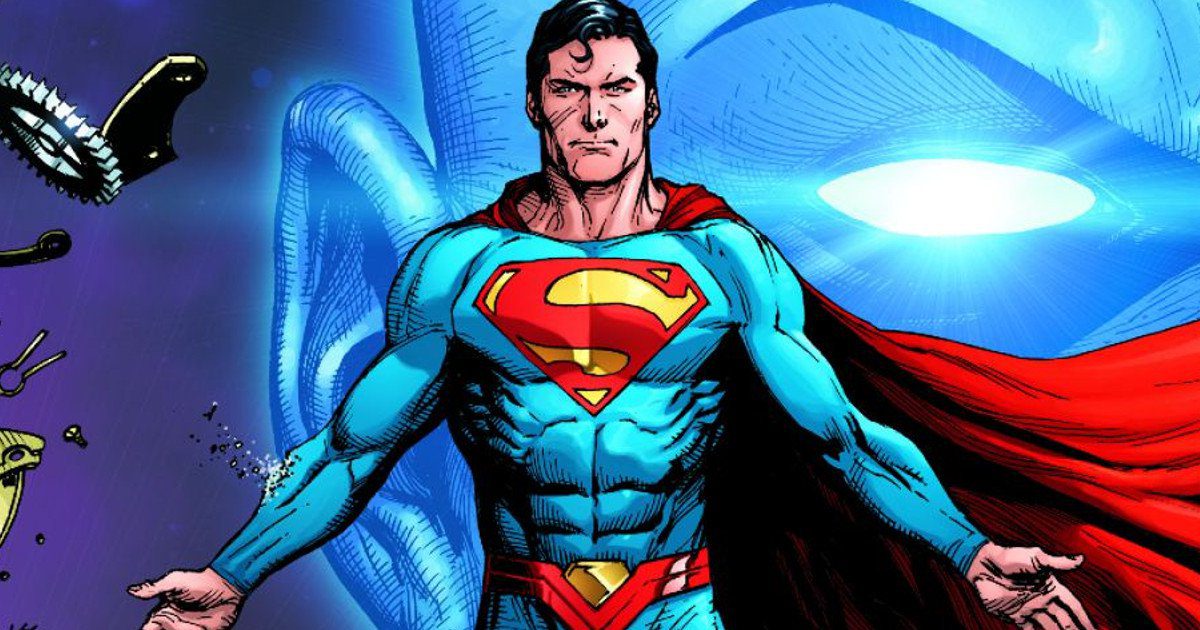
The Players
Johns was the best equivalent of Marvel’s Kevin Feige over at DC at one point and I believe that was what they wanted him to be when he was their Chief Creative Officer. However, it seems that after the poor performances of multiple DC movies and the failure at creating their own cinematic universe, he stepped down to form his own production company that now makes questionable CW shows. However, he made his name writing for comics and is still one of their most high-profile names.
Lindelof, despite having being behind a whole other show since, is still synonymous with and mainly known for Lost. You know, the show that had some tantalising ideas but went on for way too long and is the butt of every joke about a lack of payoff. However, his last show The Leftovers was a big improvement. The first season was a near-enough perfect series of TV and although the following two seasons weren’t of the same high standard, the show as a whole was a success.
So both new Watchmen projects have big names behind them but they both need a win. Johns needs to continue to solidify his status in comics after a shaky foray into movies and Lindelof needs to finally shake off the last trappings of Lost. Johns’ strategy was to go big and introduce the characters of Watchmen into the larger DC Comics universe. Lindelof’s went for a modern-day continuation, sticking strictly to the graphic novel, unlike Zack Snyder’s Watchmen film which took a few liberties with the original source material.
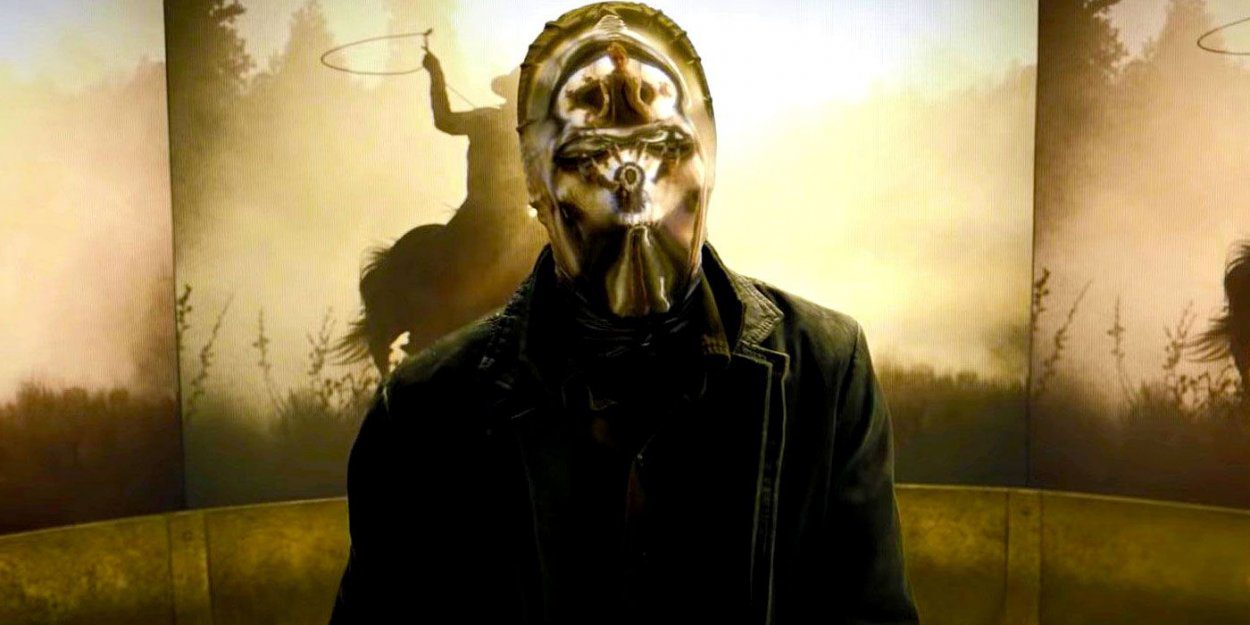
The Comic
Doomsday Clock makes some more bold moves by introducing new characters (Mime and Marionette, plus a new Rorschach) to share the spotlight with the Watchmen and a global story that incorporates DC superheroes from all different countries around the world. In this narrative, Ozymandias travels across dimensions with these three to track down Dr. Manhattan, in hopes of saving their world after it has once again reached nuclear Armageddon. Meanwhile, Dr. M has been having fun exploring what happens to this new dimension and the larger multiverse after he alters its history in various ways.
The main way is by altering Superman’s past, as he ascertains that he’s the axis of which the multiverse turns on. For example, by preventing the creation of the Earth’s first Green Lantern, Alan Scott, this has a domino effect that means the Justice Society of America never comes to be. This is the first iteration of the Justice League that is DC’s version of the Minutemen, a team of Golden Age heroes that also includes members such as Hawkman, Dr. Fate and the first Flash, Jay Garrick. This then means that Clark Kent has no one to aspire to and therefore takes longer to become Superman. This in turn means that he doesn’t travel to the future as a youth to preserve the Legion of Superheroes, a future version of the Justice League that time travels back to the present when necessary to help him.
What Johns cleverly does is use Dr. M as the reason for the different timelines and numerous reboots that DC have had over their long history. Some timelines have these Golden Age heroes and ones from the future but others don’t and now there’s a solid explanation for that; an omnipotent being is experimenting with their timeline to see what the different outcomes would be. This, of course, being a meta representation for the writers themselves. On top of this, there’s a subplot about the “Supermen Theory,” that’s causing an international uproar. This is a conspiracy that the US government is behind the manufacture of a huge amount of metahumans (à la The Boys) that turns out to be true, explaining why most superheroes originate in America. This is another shrewd, meta idea that’s helping to bring order to the chaotic world of the comics.
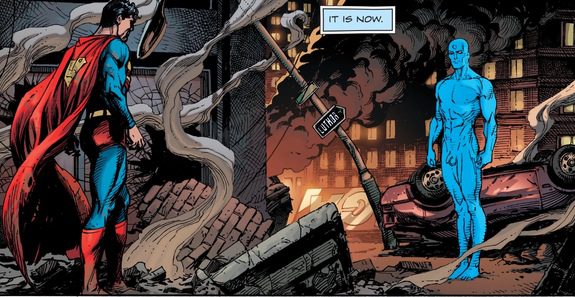
Doomsday Clock relies on the spectacle of kindred spirits meeting from different universes: Rorschach and Batman, Ozymandias and Lex Luthor, leading up to the main one between Dr. Manhattan and Superman. There are other interesting subplots, such as the origins of Mime & Marionette and the new Rorschach but these encounters are firmly front and centre. Although, it does seem odd to spend as much time on the origin of new characters when many of the ones that already exist don’t even get a look-in, such as Nite Owl and Silk Spectre.
I did enjoy the origin of the new Rorschach though, in particular. I didn’t think that Johns would be able to come up with a satisfactory one, but it turns out that he’s Reggie, the son of Rorschach’s prison psychologist, Dr. Malcolm Long. After being caught in the wake of Ozymandias’ attack on New York, he ends up in the same psychiatric facility as Byron Lewis, aka Mothman from the Minutemen. He trains Reggie in the various combat methods utilised by different members of his former team, giving him a way to channel his intense trauma. This story also develops further into an identity crisis later when he finds out the true extent of the impact Rorschach had on his father before his death, an issue that Batman is perfectly suited to help Reggie through.
Ultimately, everything is geared towards the meeting of Superman and Dr. Manhattan though. Orchestrated by Ozymandias, history repeats itself when he engineers an attack on Moscow whilst the former is present to make it look like it was the latter. This turns the world against Supes who blame him and also sends all of earth’s available heroes to Mars to confront Dr. M head-on. Seeing all of DC’s most powerful throw everything they have at him to no avail is pure fan service but also very entertaining.
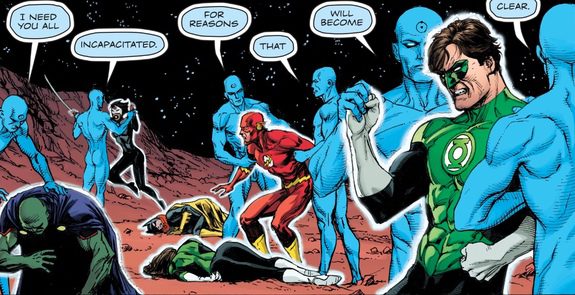
Once recovered from the Moscow attack, it’s time for the Man of Steel’s appointment with the Doctor. The latter has foreseen their encounter but cannot see beyond it, believing this means that either the former ends him or he ends existence. This takes place just as Russia’s metahumans come to demand Supes answer for the events in Moscow. A battle ensues in which he’s struggling to protect himself and the civilians around him. It’s at this most perfect moment that Dr. M chooses to tell him that he’s responsible for the death of his parents, just to see what would happen out of cold curiosity. Expecting to meet his demise, Dr. M prepares himself to meet his end but the finishing strike that he thought was destined for him ends up being one that Supes uses to defend him instead.
This single act and a reminder of his past inspires Dr. M to correct the wrongs he’s caused, which brings back the Justice Society and the Legion to come to Supes aid. After returning the Watchmen to their own dimension, Dr. M is so inspired by Supes in general, that he adopts the child of Mime and Marionette whilst they’re in prison and raises him as his own. He then gifts the child his powers, ending his own life and leaves him in the care of Dan and Laurie Hollis, aka a retired Nite Owl and Silk Spectre. The child reveals his name is Clark in the final panel, solidifying him as the Watchmen universe’s answer to Superman.
The Show
With Lindelof’s show, things are much more grounded, focused and succinct as he’s not combining two universes, which means that it has more freedom to delve into the deeper issues that Watchmen is known for tackling. The root of the whole narrative is race and its dark history in the United States. This is a bold move but a necessary and important one. Set in Tulsa, Oklahoma, the story’s centred around one of the worst hate crimes in history that isn’t well known, as the US tries it’s best to sweep it under the rug by omitting all evidence of it wherever possible.
In 1921, the Ku Klux Klan, amongst many other white people, ransacked a prosperous community nicknamed “Black Wall Street,” destroying 35 square blocks. It’s estimated that as many as 300 Black people were brutally murdered and a further 800 hospitalised. It’s hard to come to an accurate figure, as the dead were buried in mass, unmarked graves; one of which was just recently rediscovered. 10,000 were left homeless and adjusted for inflation, over $32 million of property damage was inflicted.
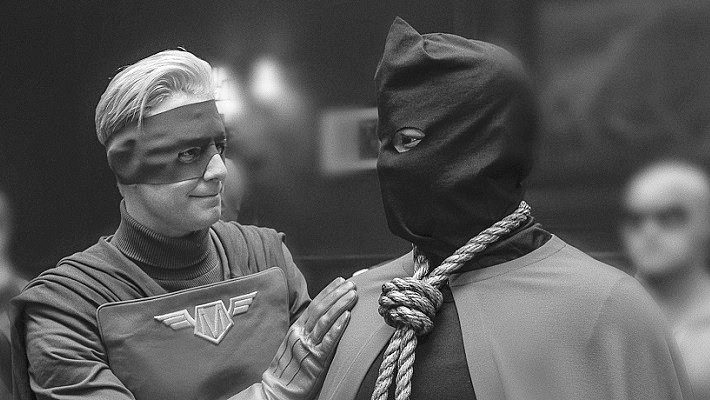
This unfathomable, heinous act of racial violence reverberates throughout the story of the show. It becomes the Superman-esque origin of Hooded Justice, the first masked vigilante, whose parents hid him in a wagon to flee the city for his life as a young child. It’s also the main reason why in this timeline, president Robert Redford rightly introduces “Redfordations” for the victims and their descendants. This creates a race war in Tulsa between The Seventh Kavalry, the latest iteration of the KKK, who blasphemously appropriate Rorschach’s image for their own disgraceful cause, and the newly-masked police.
However, it turns out that an ignorant, hayseed senator and the crooked police chief are playing both sides to create enough unrest to get the former into office. That is, until they stumble across something much more desirable. Whilst carrying out a coordinated attack on all police in their homes on one Christmas Eve, they discover that Dr. Manhattan is posing as a human and is the husband of police officer Angela Abar, who just so happens to be Hooded Justices’ granddaughter. They then capitalise on this new knowledge and hatch a new scheme to capture Dr. M and steal his power using new technology.
It’s this attack, dubbed “The White Night” that causes all police to resign, with new officers using masks to conceal their identities. Some also take this opportunity to take on full personas, including Angela, who has a nun-themed costume and goes by Sister Night. History repeats itself again as in Doomsday Clock, as her grandfather had already gone down exactly the same road. We get to see his full story when Angela experiences it firsthand through taking his Nostalgia, memories in pill form. These are manufactured by Ozymanidias’ daughter, Lady Trieu, the smartest woman in the world.
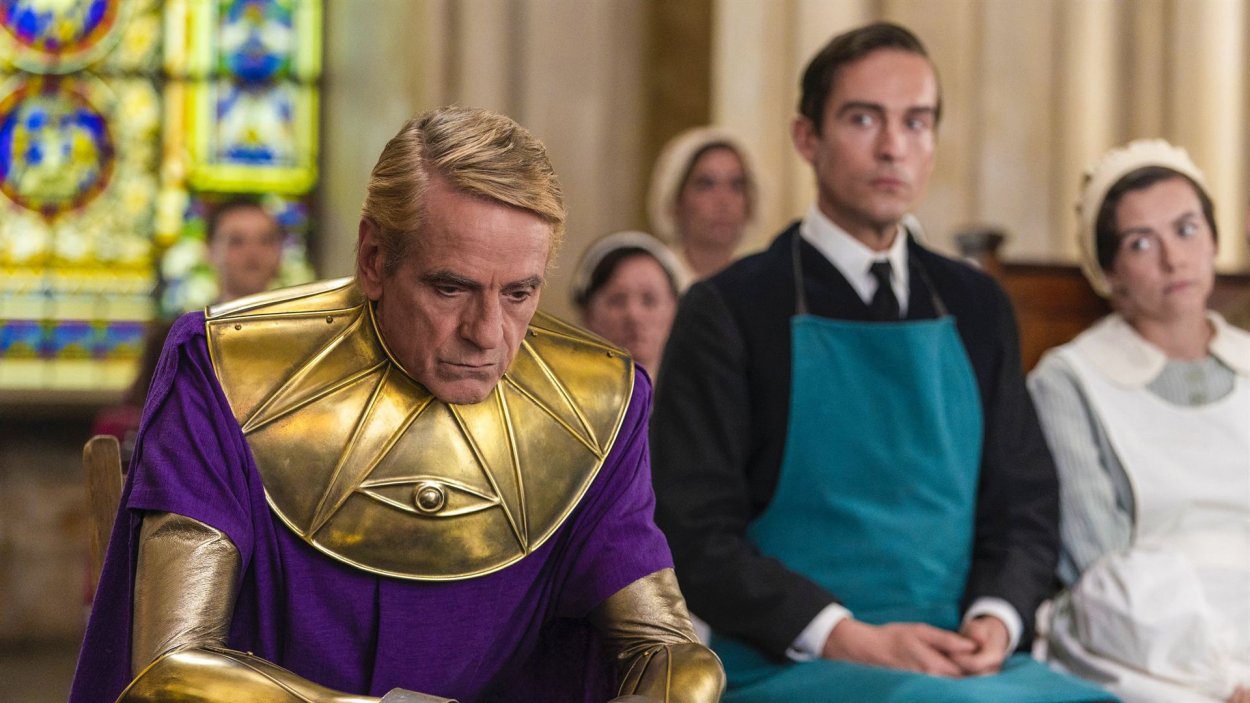
Again, there are many interesting subplots, such as Ozymandias’ self-imposed exile on a small world created by Dr. M on a moon of Jupiter. We also have episodes that act as character studies of an older, disillusioned Silk Spectre (who now works for the FBI and goes by Laurie Blake), Looking Glass (another of the new police personas) and Dr. M himself. These extremely well-written portraits, along with the appealing subject matter, cement this show’s brilliance and is what makes it so compelling.
The Seventh Kavalry’s plan is foiled by Dr. M, as he has foreseen what will happen to an extent but at the cost of his own life. He makes an alliance with Hooded Justice many years before, convincing him to ally himself with Lady Trieu to out-manoeuvre the Seventh Kavalry and take the power for herself. However, history repeats itself yet again and Ozymandias saves the day in his own questionable way, destroying her and the technology that was about to transfer Dr. M’s power.
Earlier in the series, Dr. M revealed that he could transfer his power into biological material, such as an egg. If then consumed by someone, that person would inherit his abilities…theoretically. He leaves such an egg for Angela and in the final scene of the series, we see her consume it and attempt to step out onto water but we don’t get to see if it worked, leaving things ambiguous.
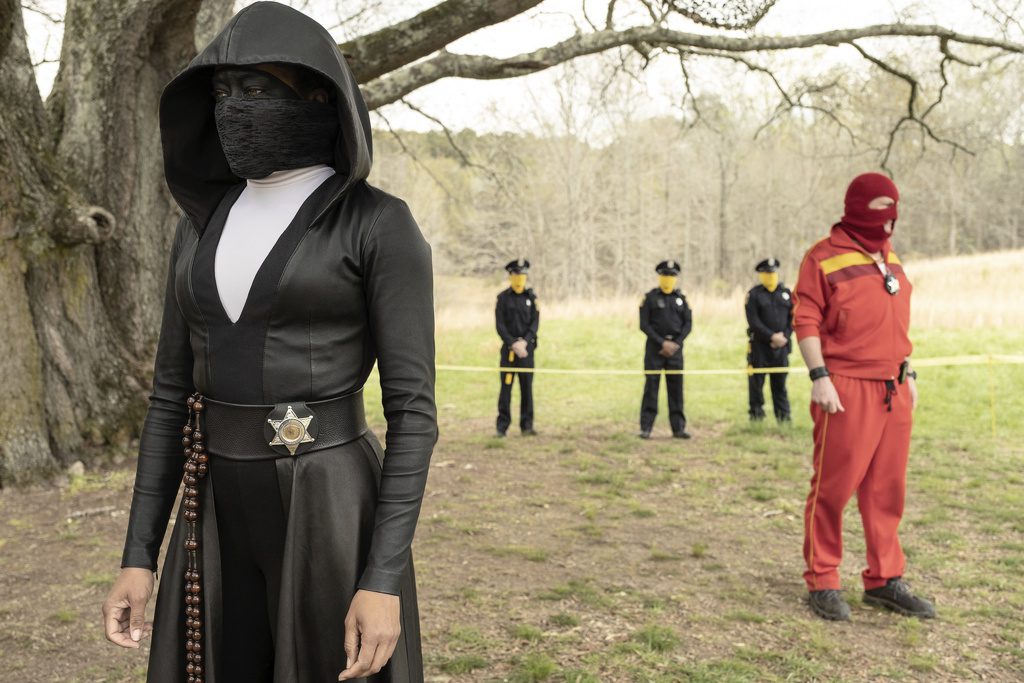
Similarities
The main, obvious similarity is that both stories are centred on Dr. Manhattan. What’s interesting though, is that both decide to humanise him in different ways. It seems the fact that Dr. M never used his abilities fully to help the world, a theme in the original graphic novel is something that the writers of both projects couldn’t move on from. In the show, they literally make him human and there are two major threats that want to steal his power and use it for their own ends but he engineers a scenario that means his demise but also the chance to pass it on to his vigilante wife.
In the comic, he’s so inspired by the selfless heroism of Superman, that he adopts a human son and again, sacrifices himself to pass on his abilities to him, so he can be a beacon of hope to Watchmen’s world. It seems that the writers of both felt that Dr. M could no longer continue to just meander on Mars and someone else deserves the chance to take on his abilities. I’m not sure I agree with them on this. Personally, I’m leaning in the direction that this is too much power for any one individual to possess and is too big a risk to take.
His abilities don‘t include increased intelligence, so I would argue that entrusting them to a broken vigilante or the child of two violent criminals is not the best idea. Especially as there’s no reason to think that either would have anything more than average intelligence; at least Jon Osterman was a nuclear physicist. No one knows to what extent gaining Dr. M’s power changes you as a person either—is it the transformation that made Jon so cold and distant? Or is it gaining the knowledge of the mechanics of the universe that also reveals the insignificance of so much else? Was Jon predisposed to this line of thinking, as he was a scientist?
No one can say for sure and this is possibly the best argument for allowing someone else to gain his abilities and find out. We also don’t know to what extent Clark and Angela would inherit them. They both still look human when we see them at the end of each narrative, so maybe they only gain some of his power, or maybe this evidence is just circumstantial. Personally, I hope Angela didn’t gain his abilities and that Dan and Laurie are up to the task of raising Clark as well as the Kents did.
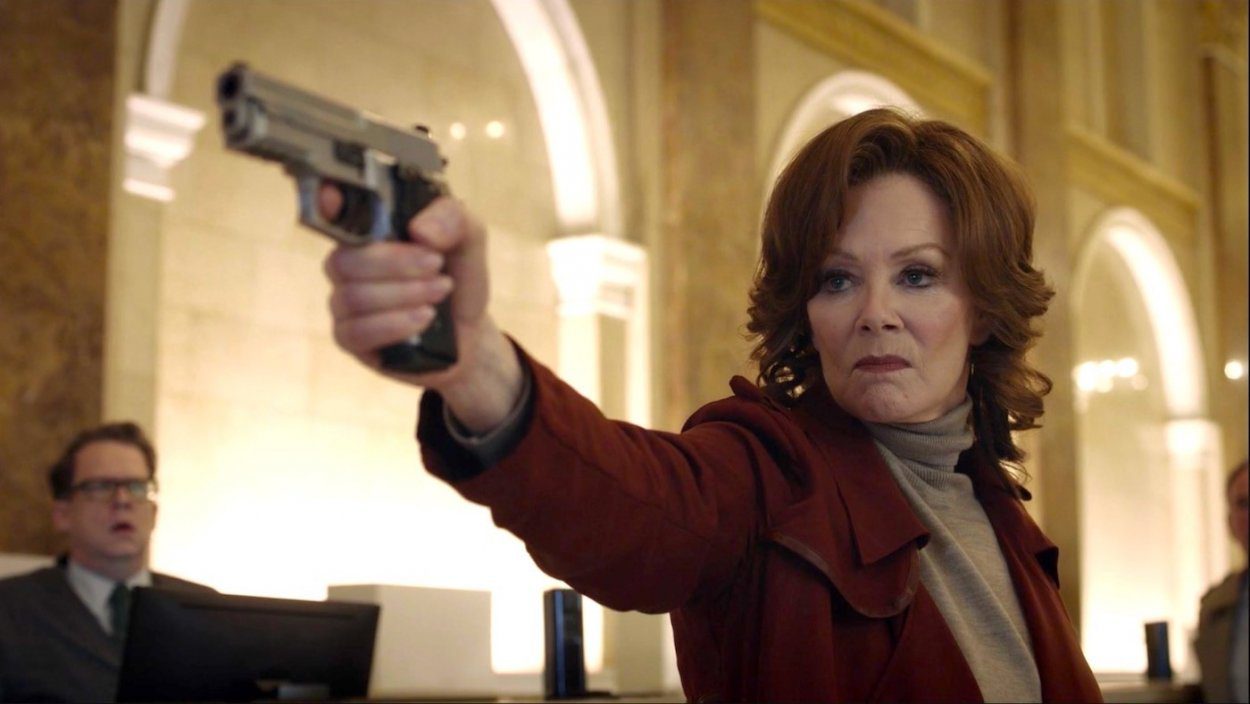
One thing is clear, both stories have a strong theme of legacy running through them. whether it’s Dr. M’s, Hooded Justice’s, Ozymandias’ or even The Comedian’s. Each has a next of kin that inherits not just their strengths but their weaknesses too. In the show, trauma is also a major theme linked to inheritance as well. Especially in the case of Hooded Justice and Angela, when she shared his experiences after taking his Nostalgia pills; this trauma being what turns them to crime-fighting and masked vigilantism in the first place.
Ozymandias saves the day in his own twisted style in both narratives as well, with his signature collateral damage. Despite his amoral methods, I suppose this does bolster my own claim that intelligence is paramount. Silk Spectre played a pivotal role in the show but poor Nite Owl was overlooked, almost completely in both stories. I can’t quite get over this, as he’s such a great character and was an essential part of the original graphic novel. I’ve heard from many different sources that I’m not the only one who would like to see him in a second series or perhaps some kind of spinoff, as he deserves so much more.
Differences
Doomsday Clock has some solid ideas that stay true to the spirit of Watchmen, such as the “Supermen Theory,” its effect on global politics and its meta-commentary on Dr. M’s abilities. Both are presented well and really push the boundaries of comic book storytelling. It also does do a fantastic job of the way it integrates the characters from the two different universes. Although, sometimes it does feel a bit stretched, meaning that some characters don’t get enough of the spotlight. Nevertheless, it still does a great job. However, the biggest difference between the two is that the comics lack the substance of real cultural issues.
Where the TV show wrestles fearlessly with race and trauma, the comics only tackle world politics and the subject of free will. Both of these tropes are well-trodden in this genre and even though it does present them in a quasi-interesting way, it doesn’t break down barriers or exist on the same level as the original graphic novel does. As I mentioned at the start of the article, this is a difficult thing to achieve, especially in this medium. Still, the original source material did it in spades and if you’re going to try and continue that legacy, you need to be thinking outside the box and coming up with something fresh and new to stay true to the spirit of Alan Moore and Dave Gibbon’s work.
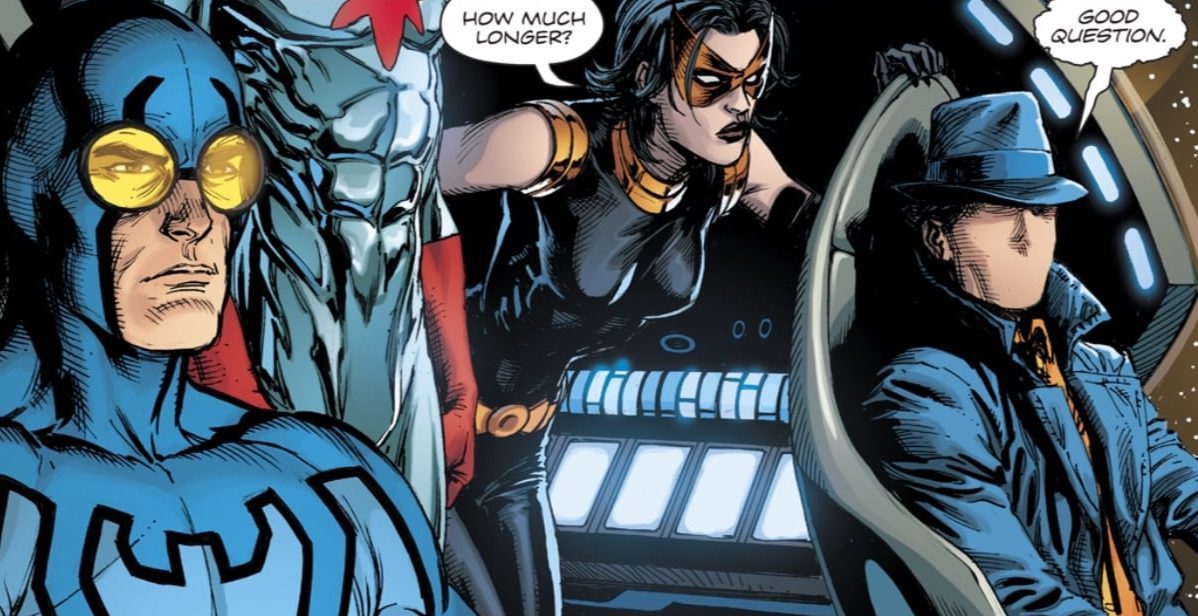
Result
This is where the TV show succeeds. It took a big leap with its themes but it committed to them fully and this is what is required of anything not just to be good but also to be groundbreaking. That is the true essence of Watchmen. Many may not know all the Watchmen characters are heavily based off heroes from Charlton Comics that Moore originally wanted to use first but couldn’t get the rights to do so. Instead, he just created quite obvious alternate versions of them. Doomsday Clock even includes them prominently in moments of its story. Dr. M was based off of Captain Atom and when the DC heroes challenge him on Mars, the Captain is the only one of them who can actually destroy him, before he remakes himself as we know he’s able to do.
The point is that Moore showed us that it doesn’t really matter what characters you have at your disposal, anything can be good if you have the ability to write complex personas in a good story. This is also what the show does well. We’re introduced to new and old characters alike that both have new, rich backstories that complement the overarching story being told. Dave Gibbons not only confirms this but puts it perfectly in a way I couldn’t agree with more:
“I’m a fanboy. I remember when the Justice League first met the Justice Society and how cool that was. I understand seeing Batman and Rorschach in the same picture is a fanboy dream. If I had a criticism, is that it’s not interesting enough. What they’re doing in the TV series is really adventurous and unexpected and extreme. In the comic, it’s a bit too closed. It’s too much of a pastiche.”
The winner is…Lindelof’s Watchmen
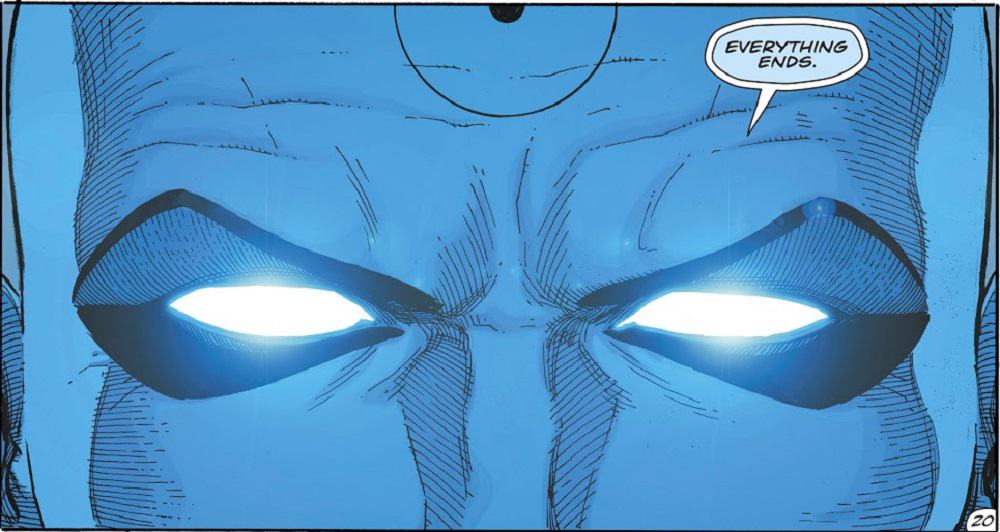


Having Dr. Manhattan as the entity responsible for the “New 52” (Post-Flashpoint) iteration of the DC Universe will, for me, go down as the greatest retcon of modern super-hero comics. Going back to 2011 and the editorial mandate of the New52, as a long time DC Comics fan I was crushed. All the characters and continuity I had invested so thoroughly in were being thrown-out with the bathwater in favor of this new imagining of the DCU. I felt the in-story explanations for these changes were rushed and not at all satisfactory. I had faith that one day, after enough time had passed, there would be a retroactive change to the story to help better explain how this all happened within the ongoing storyline. In 2016 with the Rebirth special, I was not disappointed. Doctor Manhattan responsible for the changing tone of the DC Universe, and the New 52 reboot itself, works on so many levels. So despite the incredible delays, I was hanging on every panel on the edge of my seat with Doomsday Clock. I think the story changed significantly from it’s original inception and I would be curious to know the original plans (Mr. Oz, for example, seemed early on to fit in to this story but it never panned out).
I couldn’t agree more. I read the entire New 52 Batman run and they were some of the best comics I’d ever read, so I was also a bit disappointed when I heard about Rebirth. This brilliant retcon has made up for it though. Thanks for reading.